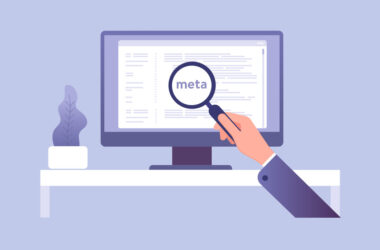Headless CMS: What and Why
According to a recent study by Gartner:
- Through 2022, 80% of marketers will continue to struggle to seamlessly connect more than three channels of the customer journey.
- By 2022, 80% of digital experience platforms will be deployable in a hybrid headless fashion.
Luckily, that second finding helps alleviate the first.
How?
Welcome to the world of the headless CMS (content management system).
Whether you’re a skilled web developer or an emerging startup, you may have seen the hype for running a headless CMS. You could be wondering if headless will be the right fit for your client or business. Or maybe you’re simply wondering what people mean by “headless CMS” in the first place. (Hint: It has nothing to do with Ichabod Crane.)
Today, we’re looking at the whats and whys of “headless,” so you should find answers to those questions. Read on!
Why the Hype for Headless CMS?
One certain thing for tech and web-based brands: Customers demand better digital experiences in more places than ever before. We expect everything to be online, everywhere.
Building one digital experience is challenging enough. So building multiples and maintaining content across them feels impossibly daunting. Seeking efficiency in achieving omnichannel presences, organizations are looking for solutions that can deliver a consistent customer experience across a variety of channels.
Traditional “monolith” CMS systems were designed to deliver content in a particular way to one digital channel. That makes them efficient at doing everything, but can load in a lot of unnecessary, restrictive, or performance-slowing extras.
Content increasingly appears in many types of sites and devices: mobile, tablets, smartwatches, and even custom displays scattered throughout live events, retail stores, or users’ own homes. And that calls for trimmer, more flexible applications.
Utilizing a monolith CMS also means bending your own preferred development to the requirements of the system. If you’re developing for a traditional WordPress instance, you must work with PHP. This can effectively wall off the content in your CMS from a new channel. Overall, these restrictions tie the hands of a talented development team when building the front-end – or infrastructure – of a new site.
In order to leverage more efficient and cost-effective delivery of content to market, these factors have organizations looking to headless CMS.
What Does a Headless CMS Do Differently?
Like a traditional “monolith CMS,” a headless CMS provides a platform to assemble content into a digital experience. But instead of coupling that content to a particular output like web page rendering, content transmits as data over an API (application programming interface).
A headless CMS only includes the back-end components of a content management system like WordPress – storing, managing, and organizing content. So, this new type of CMS essentially decouples the front-end display layer, or the head. Hence, the term “headless.”
Without that front-end display layer, the headless CMS system merely provides data from the backend to the API. Content is then made available via various API endpoints, where the data can be formatted according to unique instructions.
Headless CMS: Advantages and Disadvantages
Like anything, a headless CMS isn’t for everyone. Organizations considering a headless CMS should weigh advantages and disadvantages.
At first glance, the advantages of a headless CMS seem to outweigh the disadvantages. However, as with any new advance in web design, review each feature carefully and consider how well it aligns with your capabilities and business model.
Brands and agencies with more resources might be able to easily disregard the disadvantages and take a chance on the conceptual promise of headless CMS. But entities operating with tighter budgets will benefit from a thorough cost-benefit analysis.
The Advantages
- Multi-experience strategy – Driven by the digital transformation in today’s customer expectations, a headless CMS delivers content to a variety of touchpoints for the customer.
- Modular content design – A headless CMS leans on using small, reusable components, allowing for endless remixing of content and content types. This gives your content team more freedom to experiment, with a lot less investment from development.
- Agile work methodology – By enabling developers and content creators to work simultaneously, headless CMS improves time to market.
- Improved flexibility and end result – A headless CMS provides content creators and developers with the freedom to use their choice of CMS and front-end technologies, even where they wouldn’t traditionally match up. When development teams use their preferred programming language and frameworks, the end result is more efficient coding and fewer bugs.
- Customization – Because the front-end display layer is not baked into the same system, headless CMS platforms provide flexibility to develop custom UIs and custom front ends.
- Enhanced security potential – While a headless CMS can have similar vulnerabilities to a monolith, its customized implementation provides a level of security that might be unavailable with a conventional CMS. You could even place the content-delivering API behind layers of code — for example a security layer and application layer — to decrease the chance of a successful attack.
The Disadvantages
- Higher operational workload – The most frequently cited disadvantage is that, with headless CMS, you end up managing two web apps instead of one.
- Fragmentation – With a traditional CMS, you’re using one system with one account – and in some cases one payment. A fragmented system means more accounts, which can lead to more implementation and maintenance complexity.
- Knowledge barrier – There can be a higher barrier to entry when it comes to the development knowledge needed. Developers who understand both the CMS, the underlying languages of the CMS, and the front-end technologies can be more challenging to find.
How to Choose the Right Headless CMS
Once you’re vibing on the headless approach, your work certainly isn’t done: There are a lot of options to choose from. At the time of this article’s posting, headlesscms.org listed more than 75 headless CMS options. And this list is still growing, with even popular monoliths like WordPress and Craft CMS allowing for headless implementations.
As you compare options, consider these points:
How will content be managed?
Think about the content you need to manage and the structure your business needs. Ask questions like, “Will rich text content be locked into HTML?” Consider which CMS best enables matching data to that content structure.
Does the CMS have a storage limit?
Some solutions cap the number of records you can store in the CMS. Aim for an option that will let you grow if you foresee your needs evolving over time.
How is the data accessed?
Consider solutions that minimize roundtrips between the app and the server, and instead focus on transferring only essential data. Some headless CMS platforms offer starter projects to kickstart development. By providing CMS-specific API connectors right off the bat, you can gain considerable time savings.
What support is available?
Vendor lock makes it critical to thoroughly ascertain that the requirements of the application can be achieved with the solution you select. Inquire about effective documentation and any available community support like chat forums or Slack networks.
How established is the provider?
The oldest vendors are less than 10 years old, but new headless CMS platforms come onto the scene all the time. Examine the track record of any company you are considering and perform the requisite cost-benefit and risk-benefit analyses. And look for transparency in issue reporting.
Summary
With a constantly evolving digital ecosystem for content consumption, headless CMS platforms are certainly something to consider.
However, moving to a headless CMS is not a guarantee for success. The ultimate outcome will depend on how well you understand the balance of benefits and obstacles it can present to your particular organization and how you approach implementation.




